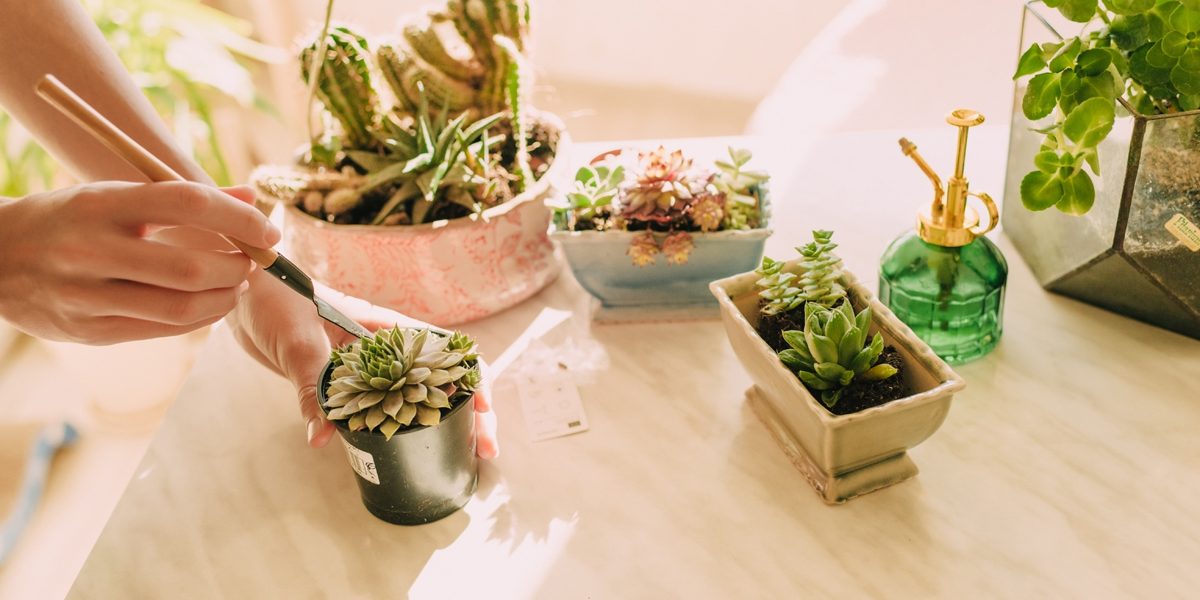If you are wondering about succulent growth, it all depends on the specific type of succulent. For instance, a fast-growing succulent like Echeveria can grow up to 6-8 inches in one year. Other succulents, such as Haworthias, can take more than a year to grow 3 inches.
What Are Succulents?
Essentially, succulents are dry-climate plants featuring fleshy leaves, rounded bodies or spears. It is very common to mistakenly consider succulents and cacti to be the same exact thing.
Succulents are a much larger group of plants that do not include the spiky cactus family, yet does includes jade plants and aloe vera.
Succulents Growth Rate
As previously established, not all succulents grow the same amount each year. Some succulents grow faster, while others take lots of time. Of course, there are instances where a lack of sunlight stunts the succulents’ growth.
Other factors, including watering and type of soil, will play a significant role in the growth rate of a succulent. Throughout the seasons and year, these plants go through phases where they are either dormant or actively growing.
Slow Growing Succulents
- Jade Plants.
- Agave.
- Cactus.
- Haworthia.
Medium Growing Succulents
- Aloe.
- Echeveria.
- Tender Sedum.
- Sempervivum.
Fast Growing Succulents
- Senecio.
- Sedum.
- Rosularia & Prometheum.
- Kalanchoe.
How Big Can Succulents Grow?
Since there are so many different succulent species, it can be difficult to cluster them into one size. Some succulents can grow larger than 50-feet tall while others remain smaller for years.
Lateral growth of the succulents must be factored in, as well. Succulents can produce “pups”, which are new plants that cluster at the bottom of the succulent, adding to the plants’ overall width.
Tips For Growing Succulents
Here are a few ways to ensure the growing process takes place in the best possible conditions:
Lithop Care (living rock) – Take particular care not to overwater lithops, as they will rot. Water lithops during fall (when you see flower buds start to appear) and spring (after leaf shedding has happened) thoroughly (until water runs through your containers drainage holes) and let the soil dry between waterings. Abstain from watering at all during winter and summer months, except for very sparse sprinklings at least once a month. Keep your lithop in a brightly lit, south facing window. For more information visit lithops.info
Nutrition – Fertilize throughout the growing season with a 10-10-10 fertilizer diluted to 1/4 strength for each watering.
Colors – Typically greener succulents are more accepting of low light environments. If your space doesn’t have a plentiful light source, try and avoid succulents that have blue, purple, pink and white tones.
Propagating – Cactus has a lot of methods for reproducing and can propagate from cuttings, leaf cuttings and producing seeds.
Artificial lighting – Succulents do their best in natural light, but if this not attainable (during winter months or your geographical location), you can still give them a light source via artificial grow lights. There are a lot of options for energy efficient artificial lighting readily available.

If you’re looking for the best pond plants for your Mesa home contact the knowledgeable and helpful folks at your local A&P Nursery.






